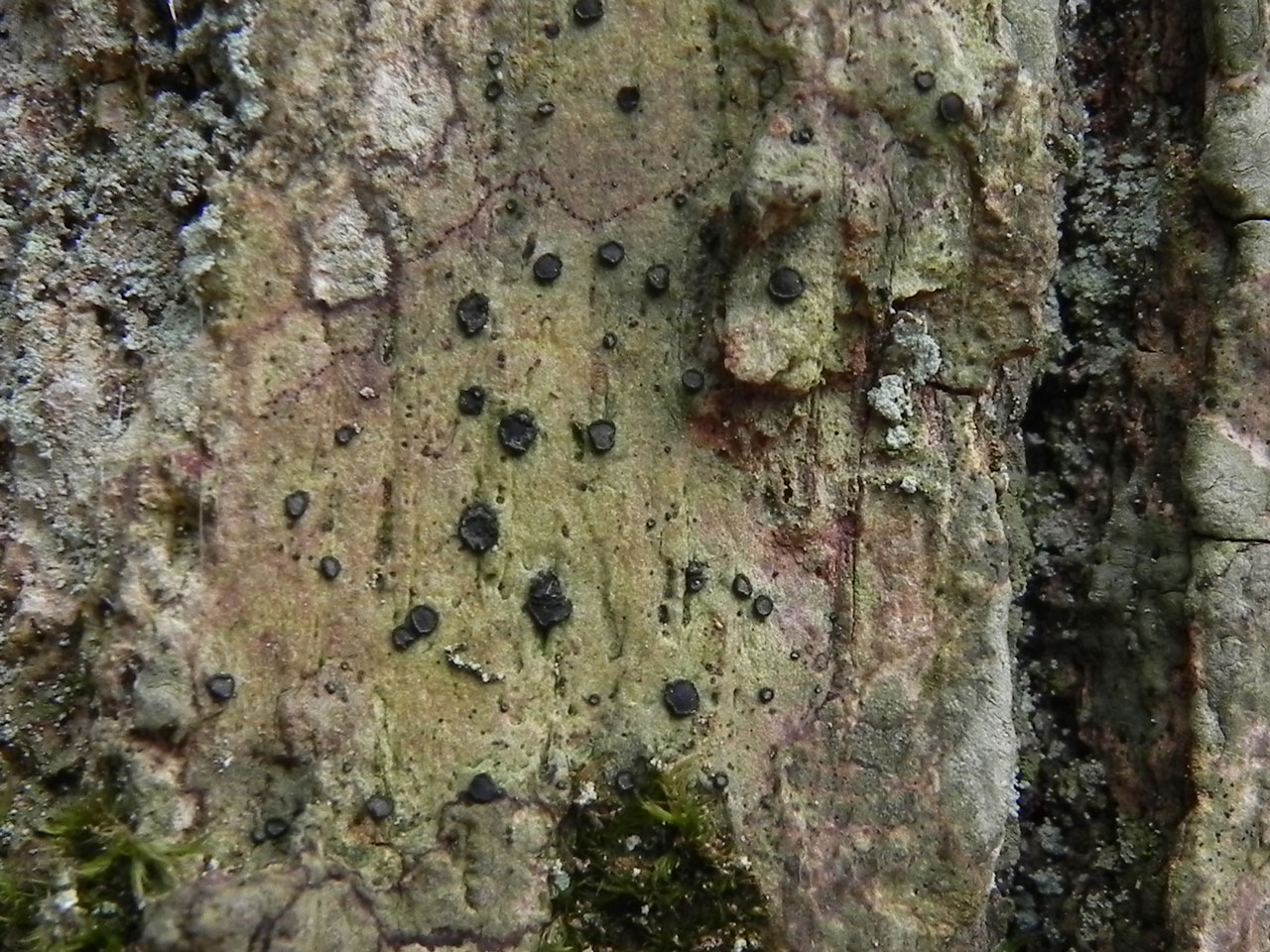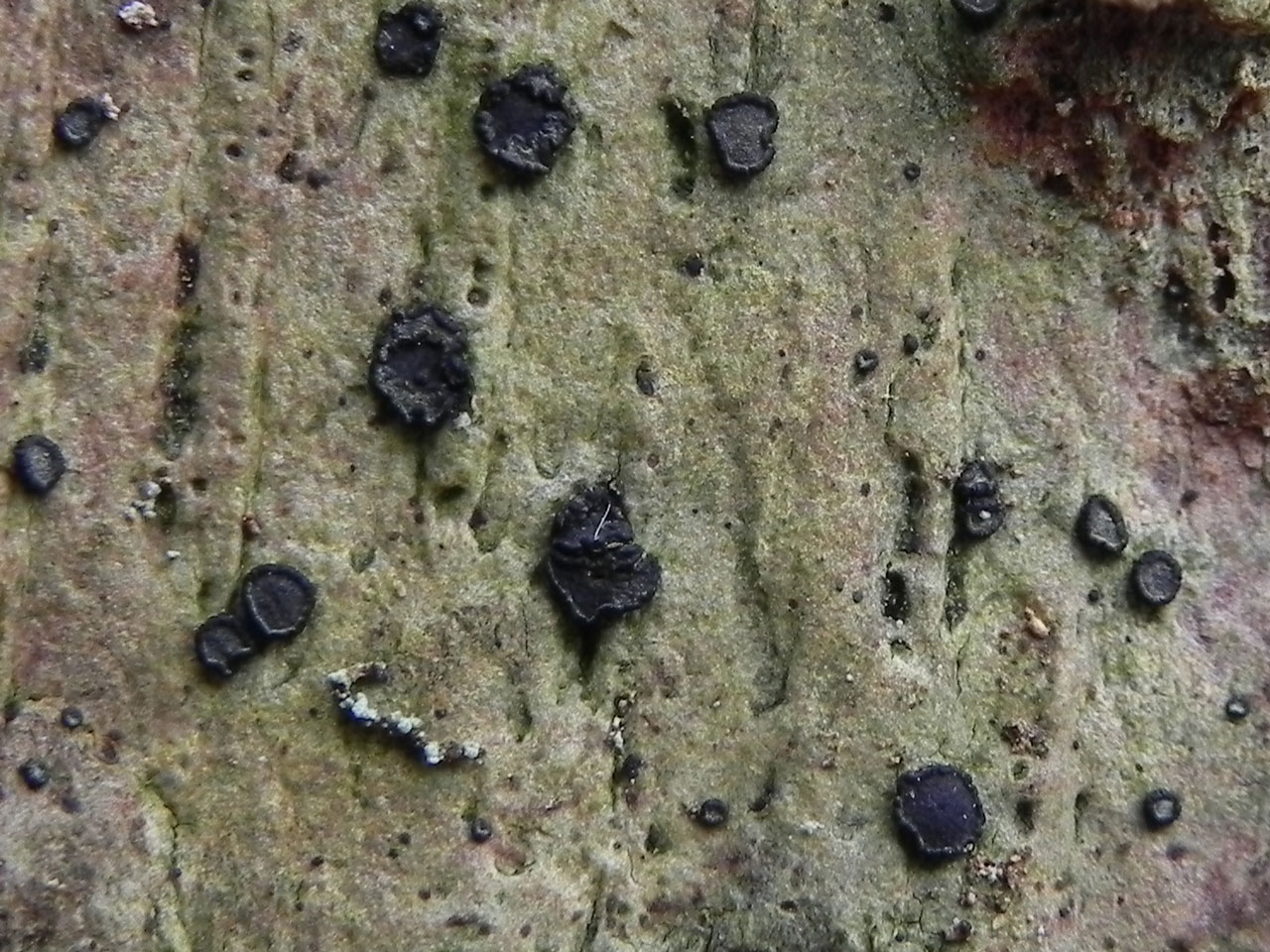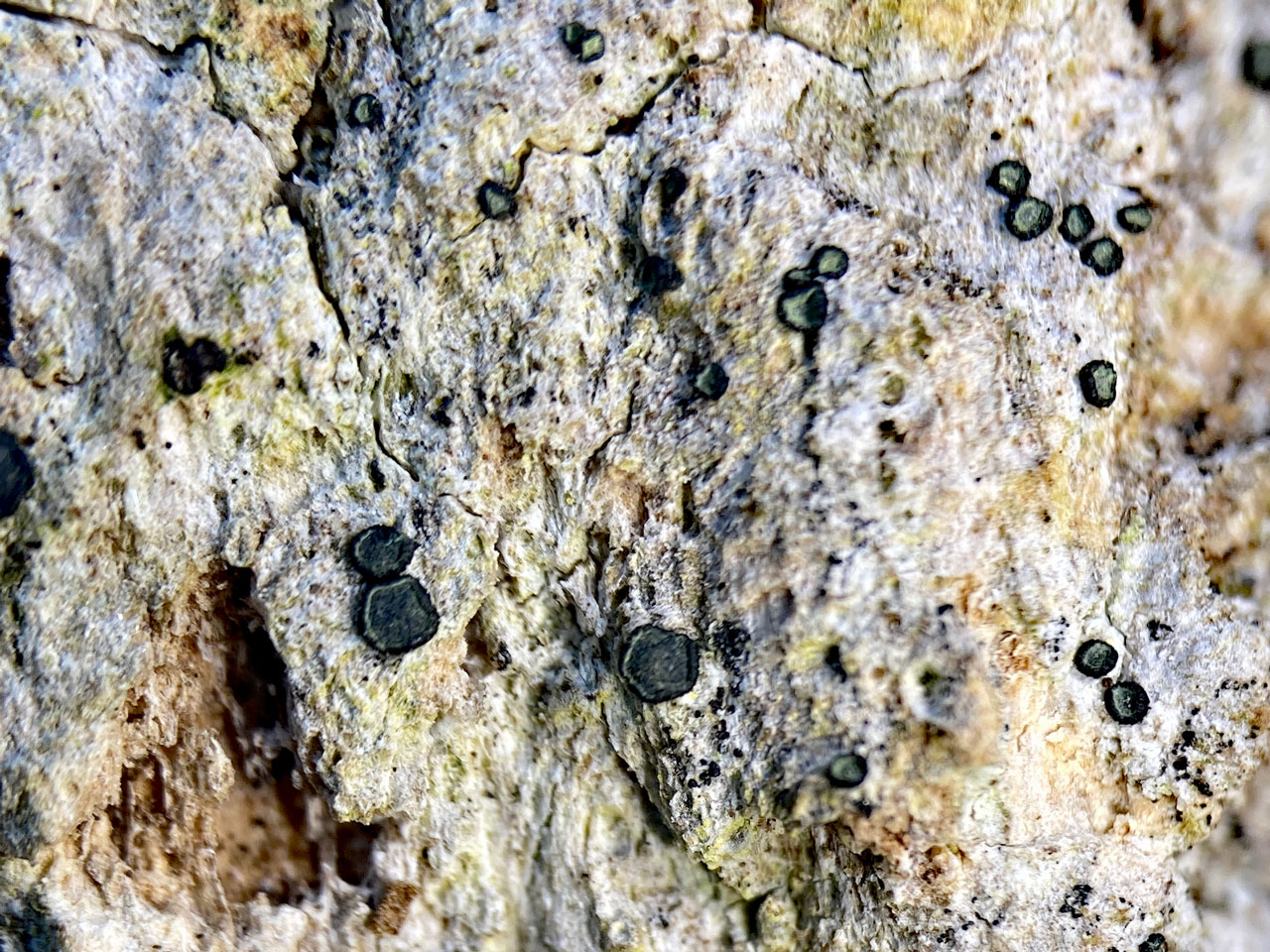Cresponea premnea
Cresponea premnea var. saxicola
Lecanactis plocina
A distinctive lichen with flat black apothecia with a persistent exciple, often with greenish pruina on the disk and found in a very specialised habitat; dry bark on veteran trees. The large populations found in parts of southern England are of European significance and reflect local abundances of veteran trees, especially Oaks.
Thallus thin, effuse and greyish, or evanescent. Apothecia 0.4–1.5 (–2) mm diam., disciform, large, black, sessile; disc glabrous or thinly grey-green-pruinose, flat; true exciple persistent, prominent, ± crenate. Ascospores 18–25 × 4.5–6 (–7) μm, cylindrical, (4-) 5-septate, often curved, with pointed ends. Pycnidia occasional, mostly arranged in lines or groups, black, half-immersed to sessile, 60–100 μm diam.; conidia bacilliform, 3.5–4.6 × ca 0.8 μm. Thallus and medulla K–, C–, KC–, Pd–.
Specimens on rocks have been named as Lecanactis plocina sensu auct. brit., but no differences, other than substratum, are apparent. L. plocina is now often classified as Cresponea premnea var. saxicola (Leight.) Egea & Torrente (1993), and occurs widely, although considerably rarer.
On dry, rough, usually well-lit bark and sometimes lignum of old Oak, Holly, Yew and rarely other species including Beech, Hornbeam, Rowan and Lime; intolerant of nutrient enrichment. The dominant species of the Ancient Dry Bark Communities (Lecanactidetum premneae) on dry bark on old trees, often with Lecanographa lyncea, but spreads on to communities in wetter bark in woods with very high populations, as in the New Forest. It occurs primarily in ancient, usually open, parklands or forests, sometimes in hedges and roadsides, more rarely on hard, acid rocks under dry overhangs.
The Ancient Dry Bark Community (Lecanactidetum premneae) needs a generally humid oceanic climate, but not a very wet one where frequent stem flows and hence bryophyte growth extends into overhanging bark. It is therefore very rare or absent in temperate rainforest habitats but can be abundant in southern oceanic woods. Sanderson (1996 & 2010) found that, in the New Forest, Cresponea premnea was rare in developing old growth stands that were clear felled in the early 18th century, even when the lichen was frequent in adjacent ancient old growth pasture woodland. It had however, fully recolonised pasture woodland developed over farmland abandoned after the Black Death. Cresponea premnea was a somewhat earlier colonist than Lecanographa lyncea, which was wholly absent from early 18th century stands, but still needs over over 300 years to fully colonise new woodlands.

Most frequent in S., rare in N. England (N. to Cumberland), W. Scotland, Wales, Ireland.
Cresponea premnea populations in southern Britain can be very large, in some meta-sites as in the New Forest and parts of east Devon it proably occupies 1000s of tress. This represent a large proportion of the European population, reflecting the abundance of veteran Oaks in parts of the English and Welsh landscapes and giving our populations European significance.
Britain: Notable, International Responsibility species
Scotland: Priority Taxon for Biodiversity in Scotland
Wales: Near Threatened
Cannon, P., Aptroot, A., Coppins, B., Ertz, D., Sanderson, N., Simkin, J. & Wolseley, P. (2021). Arthoniales: Roccellaceae, including the genera Cresponea, Dendrographa, Dirina, Enterographa, Gyrographa, Lecanactis, Pseudoschismatomma, Psoronactis, Roccella, Schismatomma and Syncesia. Revisions of British and Irish Lichens 16: 1-22.
Sanderson, N. A. (2010) Chapter 9 Lichens. In: Biodiversity in the New Forest (ed. A. C. Newton) 84-111. Newbury, Berkshire; Pisces Publications
Text by Neil A Sanderson, based on Cannon et al (2021)




